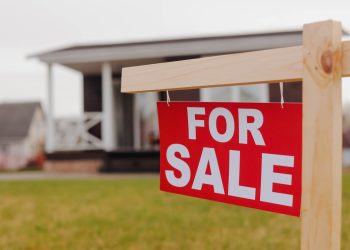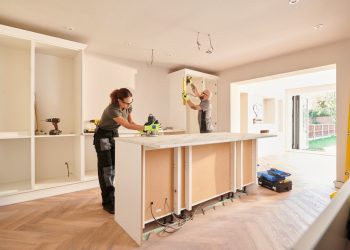As mortgage rates currently sit above 7%, housing construction has taken a hit in response, according to a new report from the National Association of Home Builders (NAHB) using data from the U.S. Department of Housing and Urban Development and the U.S. Census Bureau.
Housing starts dropped a steep 11.3% in August, as NAHB reported, to an annual rate of 1.28 million units. Single-family starts decreased 4.3% to an annual rate of 941,000, 2.4% higher than a year ago. In the multifamily sector, starts decreased 26.3% to an annualized pace of 342,000.
The data:
- The number of single-family units under construction is down 16.3% compared to a year ago at 676,000. Meanwhile, the number of apartments under construction increased to 1.01 million.
- On a regional and year-to-date basis, combined single-family and multifamily starts are 22.8% lower in the Northeast, 13.6% lower in the Midwest, 8.8% lower in the South and 16.5% lower in the West.
- Overall permits increased 6.9% to a 1.54 million unit annualized rate in August. Single-family permits increased 2% to a 949,000 unit rate.
- Single-family permits are also up 7.2% compared to a year ago. Multifamily permits increased 15.8% to an annualized pace of 594,000.
- Looking at regional permit data on a year-to-date basis, permits are 22.9% lower in the Northeast, 17.2% lower in the Midwest, 13.3% lower in the South and 18.2% lower in the West.
The takeaways:
“High mortgage rates above 7% combined with low resale inventory and higher home prices are slowing housing production, as many first-time homebuyers and younger households are struggling to purchase an affordable home,” said NAHB Chairman Alicia Huey. “With high mortgage rates sending buyers to the sidelines, and a nationwide shortage of 1.5 million units, we need to increase the housing supply to get this market back into balance to meet the pent-up demand for when market conditions improve.”
“Despite higher demand for new construction stemming from a lack of resale inventory, home builders are feeling pessimistic about the housing market because of elevated mortgage rates hovering above 7%,” added Danushka Nanayakkara-Skillington, NAHB’s assistant vice president for forecasting and analysis. “Unfortunately, we expect mortgage rates to remain at higher levels as the Federal Reserve is likely to increase rates one more time later this quarter.”











